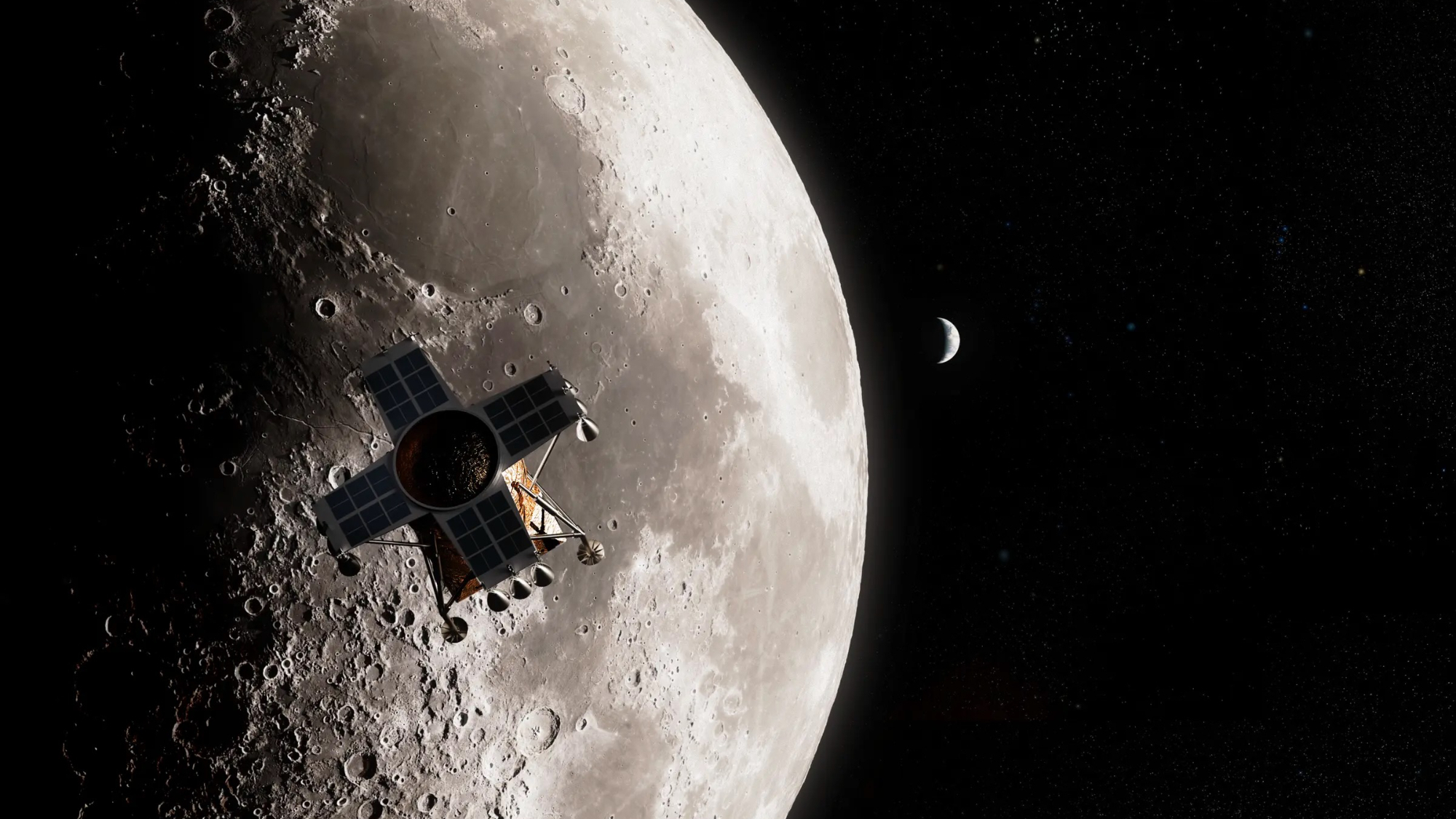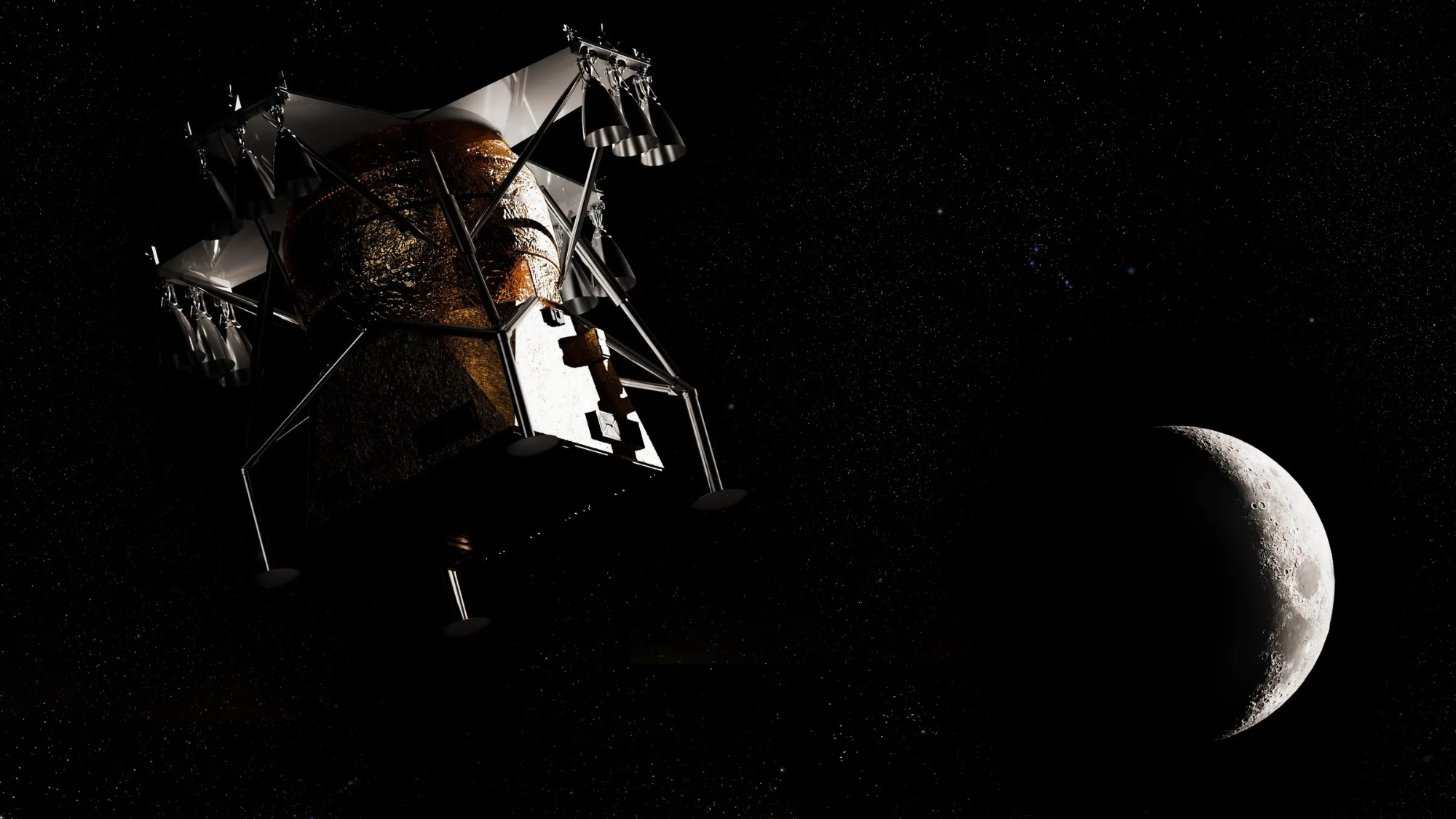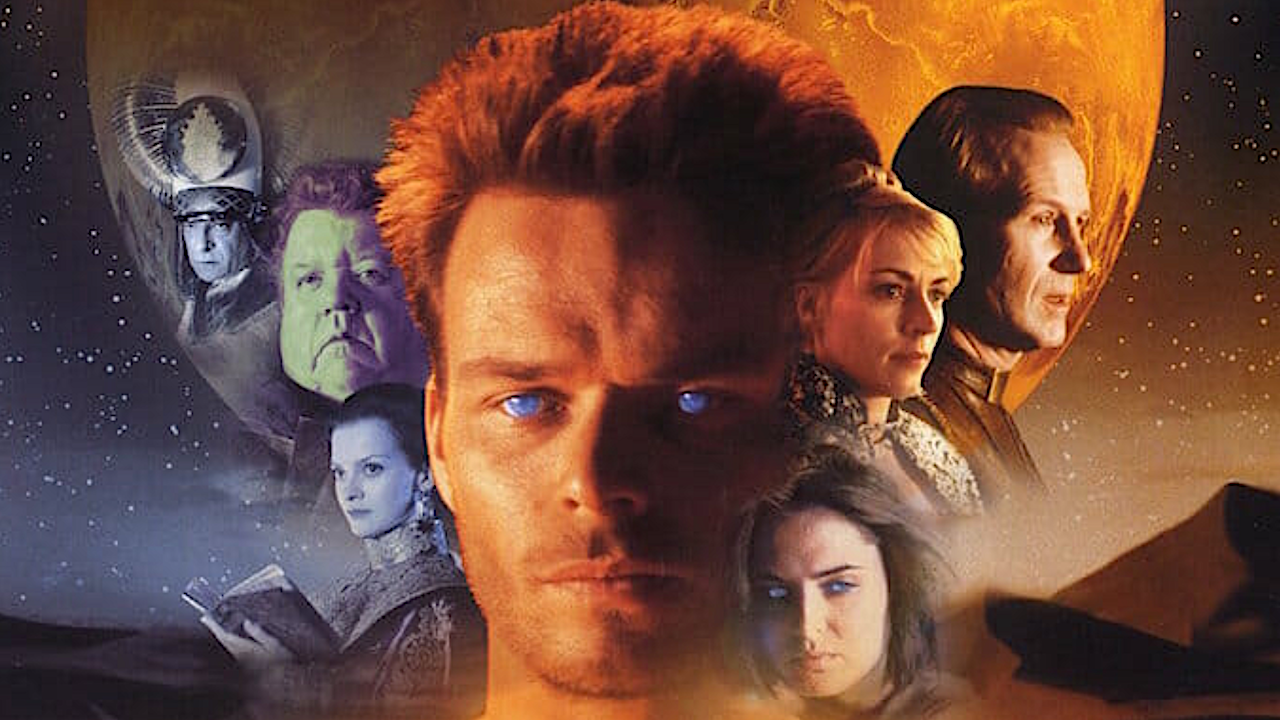A new private moon lander rises: Impulse Space throws its hat into the lunar ring
"We're confident in our ability to solve technology's toughest challenges and excited to continue accelerating our future beyond Earth."

A new private moon lander could take flight just a few years from now.
Impulse Space — a commercial space company founded by Tom Mueller, the first employee the billionaire Elon Musk ever hired at SpaceX — announced on Tuesday (Oct. 14) that it plans to build a robotic moon lander to help open the lunar frontier.
"To echo President John F. Kennedy, going to the moon is hard. But we know that we have some of the brightest minds in aerospace engineering here at Impulse, who push the boundaries of innovation forward every day," Mueller wrote in a blog post on Tuesday that laid out Impulse's lunar vision. "We're confident in our ability to solve technology’s toughest challenges and excited to continue accelerating our future beyond Earth."

Impulse Space, which Mueller founded in 2021, specializes in in-space transportation — getting spacecraft where they need to go after they launch into the final frontier.
The company already operates a dishwasher-sized space tug called Mira, which reached space for the first time on SpaceX's Transporter 9 rideshare mission in November 2023. Impulse is also working on a "kick stage" known as Helios, which is designed to deliver large payloads from low Earth orbit to higher-energy destinations like geostationary orbit and Earth-moon space. Helios is scheduled to make its spaceflight debut in late 2026.
Impulse's moon plans involve that Helios kick stage and a new lunar lander, which the company will build in-house. The duo will launch together on a standard medium- or heavy-lift rocket, according to Mueller's blog post.
"Once Helios and the lander are deployed in low Earth orbit (LEO), Helios serves as a cruise stage, transporting the lander to low lunar orbit within one week," he wrote. "The lunar lander then separates from Helios and descends to the surface of the moon. By taking advantage of Helios' high delta-v capabilities, this mission architecture doesn't require in-space refueling."
Breaking space news, the latest updates on rocket launches, skywatching events and more!
Each Helios-lander mission will be able to put 3 tons of payload down on the moon, Mueller said. The first such delivery could occur as soon as 2028, he added.
A number of private lunar landers are already flying or in development. For example, Houston company Intuitive Machines has launched its Nova-C spacecraft to the moon twice already, and Tokyo-based ispace has done the same with its Hakuto-R craft.
Peregrine, a spacecraft built by Pittsburgh-based Astrobotic, has one flight under its belt, as does Firefly Aerospace's Blue Ghost. (Blue Ghost is the only one with a fully successful mission to its name; Nova-C tipped over shortly after landing on both of its moon flights, Hakuto-R crashed hard into the lunar surface twice, and Peregrine suffered a problem that prevented an attempt at a lunar landing.)
The above are all relatively small robotic landers, but there are bigger, crew-capable moon craft in development as well. For instance, NASA has tapped SpaceX's Starship and Blue Origin's Blue Moon vehicle to get its Artemis astronauts down safely on the lunar surface.
Impulse Space aims to bridge the gap between these two lander categories, offering a cost-effective way to get midsize payloads down on the moon, according to Mueller.
"We need landers capable of near-term, multi-ton cargo deliveries in order to rapidly build out a sustainable lunar presence," he wrote. "These sorts of deliveries could include things like a lunar terrain vehicle, rovers, communication relay systems, power generators and habitation modules."
Impulse Space has already started working on the moon lander's engine, which will "use a nitrous and ethane bipropellant — the same combination used successfully in space on Mira," Mueller wrote.
And he reminded readers that Impulse took Mira from a mere design on paper to a functioning spacecraft in Earth orbit in less than 15 months.
"We’re confident in our ability to deliver this solution because of our strong track record of rapid success," Mueller wrote of his company's moon plans.
Editor's note: The original version of this story stated that Astrobotic's Peregrine lunar lander didn't make it out of Earth orbit. That is incorrect; Peregrine reached lunar distances but suffered a problem that prevented a landing attempt, and it was brought back to Earth for destruction in the planet's atmosphere. The story was corrected at 11:15 a.m. ET on Oct. 17.

Michael Wall is a Senior Space Writer with Space.com and joined the team in 2010. He primarily covers exoplanets, spaceflight and military space, but has been known to dabble in the space art beat. His book about the search for alien life, "Out There," was published on Nov. 13, 2018. Before becoming a science writer, Michael worked as a herpetologist and wildlife biologist. He has a Ph.D. in evolutionary biology from the University of Sydney, Australia, a bachelor's degree from the University of Arizona, and a graduate certificate in science writing from the University of California, Santa Cruz. To find out what his latest project is, you can follow Michael on Twitter.
You must confirm your public display name before commenting
Please logout and then login again, you will then be prompted to enter your display name.
